Rocket Boat, Rocket Crash, Rocket Buildings
And an award too.
With a handful of new privately backed rockets set to debut in the few months before the year ends, the space sector in China is continuing its buzz of activity, including testing of hardware, production of vehicles, and launching necessary support vessels.
iSpace launches booster recovery ship
iSpace’s Hainan subsidiary shared on August 5th that its autonomous booster recovery ship, often just called a drone ship, had been launched into the waters1 of Yangzhou (扬州市), in Jiangsu province (江苏), by its contracted builder, Jiangsu Runyang Shipbuilding Co Ltd (江苏润扬船业有限公司). Officials from iSpace, the shipbuilder, and other contributing enterprises were present for the launch.
iSpace’s Chairman, Peng Xiaobo (彭小波), was one of the officials there and took the opportunity to state:
“As China's first launch vehicle recovery ship, the 'Interstellar Homecoming' has explored and established new standards for the integration of our country's aerospace and shipbuilding industries, serving as a typical demonstration and leading role for the construction of subsequent launch vehicle recovery ships in our country. It fills a gap in domestic offshore engineering vessel types. From today forward, our country's offshore engineering fleet adds launch vehicle recovery ships as a new vessel category. The 'Interstellar Homecoming' is the concrete embodiment of our dream to explore the stars and seas, giving us confidence and strength.”
If there are any problems with this translation please reach out and correct me.
As written on the sides of the vessel, the drone ship’s name is Qinglan (清澜), Clear Waves in English, as part of iSpace’s Xingji Guihang (星际归航), Interstellar Homecoming, fleet.
The drone ship is stated to be 42 meters wide and 100 meters long, with a booster landing area of 40 by 60 meters for Hyperbola-32 first-stages, while displacing 17,000 tons. Four propulsion units, two at the aft and two in the bow, are installed to control the vessel and to station keep while awaiting a booster.
Before a Hyperbola-3 first-stage booster lands on the vessel, sea trials are set to be performed to ensure all mechanical and electrical systems are functioning as intended. The drone ship has a few months to perform those trials as Hyperbola-3 is set to debut around the end of the year.
With its launch, iSpace’s drone ship is the first in China and believed to be the sixth in the world, following Blue Origin’s ‘Jacklyn’, Rocket Lab’s ‘Return On Investment’, and SpaceX’s ‘Just Read the Instructions’, ‘Of Course I Still Love You’, and ‘A Shortfall Of Gravitas’.
Longyun fired after splashdown
Announced on July 28th, Jiuzhou Yunjian fired up one of its Longyun engines, which burns liquid methane and liquid oxygen to generate 70 tons of thrust, that had previously flown for Space Epoch’s Yuanxingzhe-1 vertical takeoff vertical landing test in May. At the end of the test, the engine was submerged in seawater while the vehicle softly splashed down.
According to the company, the recovered engine was fired up four times to verify its ability to smoothly start up and shut down, along with its gimbaling mechanisms and electrical components.
For the re-firings a post-splashdown assessment and process was completed to ensure the engine was still functional, along with generally building company expertise in preparing seawater-exposed engines to fly again. Space Epoch added that the post-splashdown firings laid a solid foundation for its reusable Yuanxingzhe-1 launch vehicle.
Deep Blue Aerospace crashes in second hop?
Deep Blue Aerospace’s Nebula-13 performed its first hop back in September 2024, getting all the way to landing leg deployment before crashing into its landing pad. In the weeks that followed, it was said that a second hop would take place around November 2024, but a second test vehicle was delivered at the end of the year.
Recently, Nebula-1’s second hop has quietly taken place between July 28th and August 2nd, although quite unsuccessfully, from the company’s own test facility in the remote Ejin Banner, in the Inner Mongolia Autonomous Region, near the Jiuquan Satellite Launch Center. According to analysis by Aerospace Science Popularization Group (航天科普小组), drawing on imagery by Europe’s Sentinel-2 satellite, the second hop launched before quickly veering off course and crashing about 630 meters away.
Follow-up imagery and analysis would reveal the full extent of the crash site, with an explosive area of about 13,000 square meters. As such, Aerospace Science Popularization Group believes that Nebula-1’s flight termination system failed to trigger. Due to the possible failure of the flight termination system, the second hop may have also broken new regulations.
Weeks before the attempted second hop, Deep Blue Aerospace took over its new production facility in Wuxi (无锡市), Jiangsu province, set to produce ten Neubla-1 vehicles per year and one hundred engines for it. Engines are already being prepared in the new facility, including the first 130-tons of thrust, rocket-grade kerosene and liquid oxygen burning Thunder-RS engine for Nebula-2.
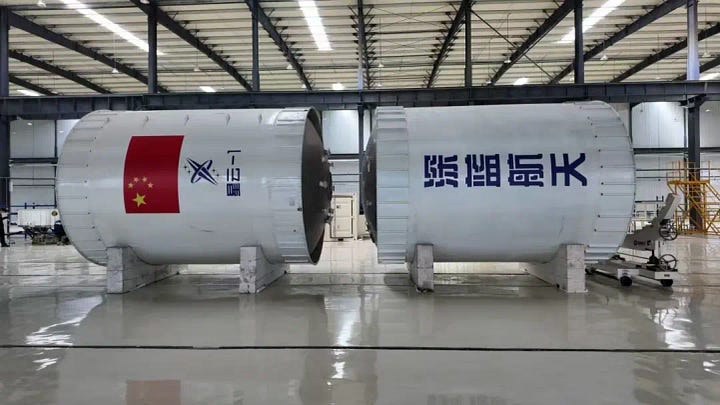
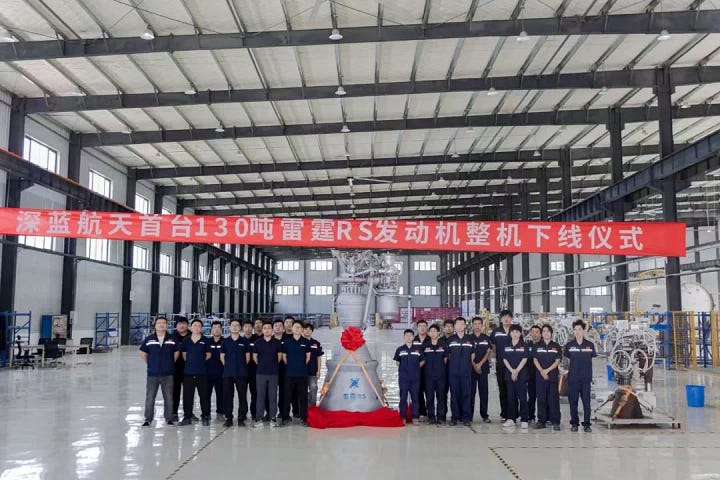
CAS Space completes Jiuquan facility
CAS Space announced on July 25th that it has completed its launch vehicle assembly facility at the Jiuquan Satellite Launch Center, which will support the upcoming Kinetica-24 launch vehicle and the proven Kinetica-1 rocket. The 6,000 square meter facility is also planned to store customer satellites, rocket components, and perform final tests ahead of launch missions.
The first mission planned to be supported by the company’s new facility is the eighth flight of Kinetica-1, expected to have a shorter preparation time thanks to the facility, as the entire vehicle will be moved to the launch pad from it. Previously, final checks and hardware integration were performed at the launch pad inside a rolling building.
In the near future, Kinetica-2 will be prepared for its debut flight, bringing its three first-stage booster cores together, atop of its transporter-erector, before heading to the launch pad.
Speaking of Kinetica-2, CAS Space shared a few days later, July 28th, that it expects to ship the first flight vehicle to the Jiuquan Satellite Launch Center around the end of August. Currently, the debut flight of the rocket is set for September, carrying the Qingzhou (轻舟) cargo resupply spacecraft for its first test mission too.
A few weeks ago in early June, one of Kinetica-2’s first-stage booster cores with its three YF-102 engines was fired up for a complete flight duration burn.
Galactic Energy CEO receives award
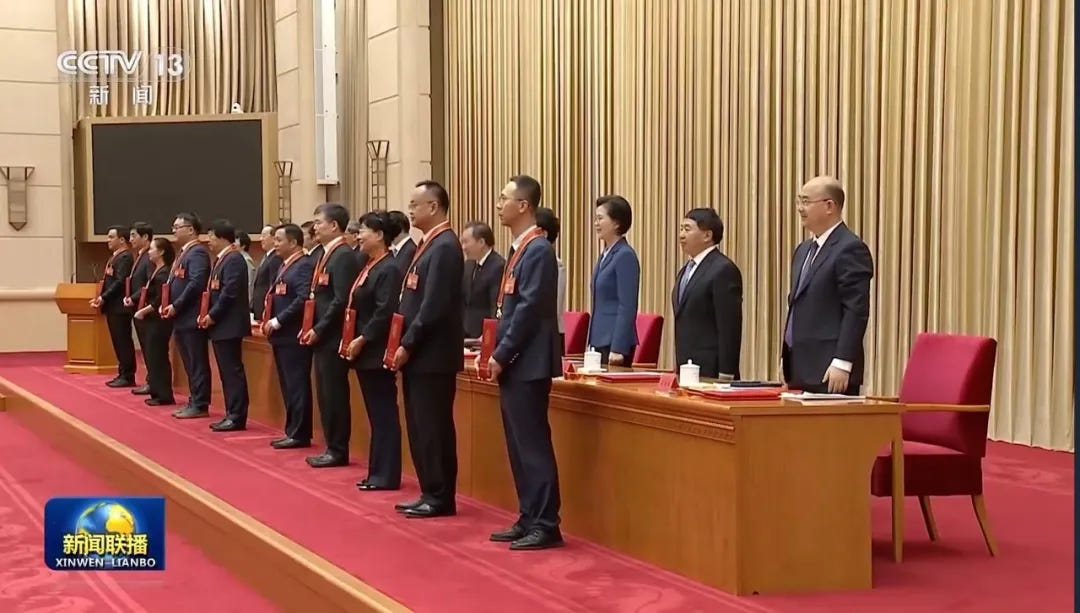
Liu Baiqi (刘百奇), Founder and Chief Executive Officer of Galactic Energy, was one of a hundred individuals on July 29th to be awarded the title ‘Outstanding Builders of Socialism with Chinese Characteristics’, handed out by Wang Huning (王沪宁)5. Upon receiving the award, Liu commented:
“This honor is not only a recognition for me and the Galactic Energy space team, but also an encouragement to all private aerospace practitioners. We will continue to adhere to independent technological innovation, promote the high-quality development of China's commercial aerospace industry, and contribute even more to the construction of a powerful space nation.”
Since November 2020, the company’s Ceres-1 rocket has flown twenty times, most recently in May, to deliver 81 spacecraft into orbit. With only one failure and nineteen successes, Ceres-1 is by far China’s most successful privately owned launch vehicle. Galactic Energy is also working on the partially reusable Pallas-16 too, set to fly later this year.
At the award ceremony, Wang Huning is reported to have expressed the hope that people from the private sector and new social strata will dedicate themselves to serving the nation, focus on development, abide by the law, and promote common prosperity while pursuing wealth.
Astronstone prepares for second-stage static fire
Astronstone released its commemorative mission badge for AS-1’s7 upcoming static fire on July 31st. But, the company did not share when it will perform the test.
It is known however, that a first-stage static fire is planned for September, as part of an extensive test campaign. Following that, AS-1’s debut orbital flight is being targeted for between late 2026 and early 2027.
In recent months, Astronstone has conducted a vibration test of second-stage hardware along with manufacturing a test article. The company has also raised over 100 million Yuan (around 13.9 million United States Dollars, as of August 5th) so far.
A river. The city is landlocked, but its rivers and lakes system flows out to the Yellow Sea.
Hyperbola-3 is a two-stage partially reusable rocket, set to carry up to 13,600 kilograms to low Earth orbit.
Nebula-1 is a two-stage partially reusbale launch vehicle planned to deliver up to 2,000 kilograms into orbit.
Kinetica-2 will initially be an expendable two-stage launch vehicle sending up to 12,000 kilograms into orbit. First-stage reuse is currently planned to be implemented in 2028.
Wang Huning is the Chairman of the Chinese People’s Political Consultative Conference and serves on the Politburo Standing Committee of the Communist Party of China.
Pallas-1 is a two-stage partially reusable launch vehicle, planned to carry 8,000 kilograms to low Earth orbit
AS-1 is a two-stage partially reusable rocket, planned to deliver 15,700 kilograms into orbit.



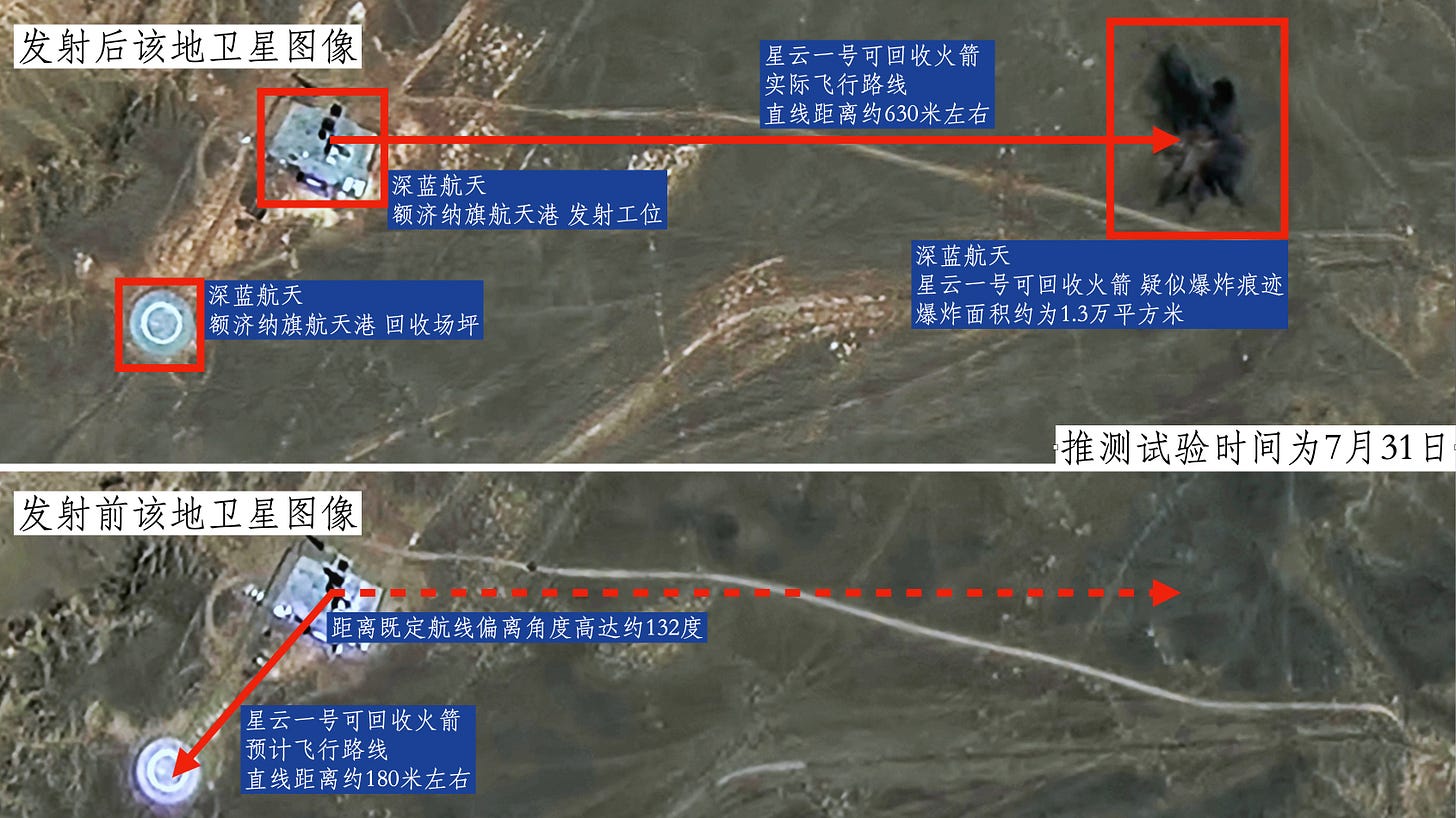
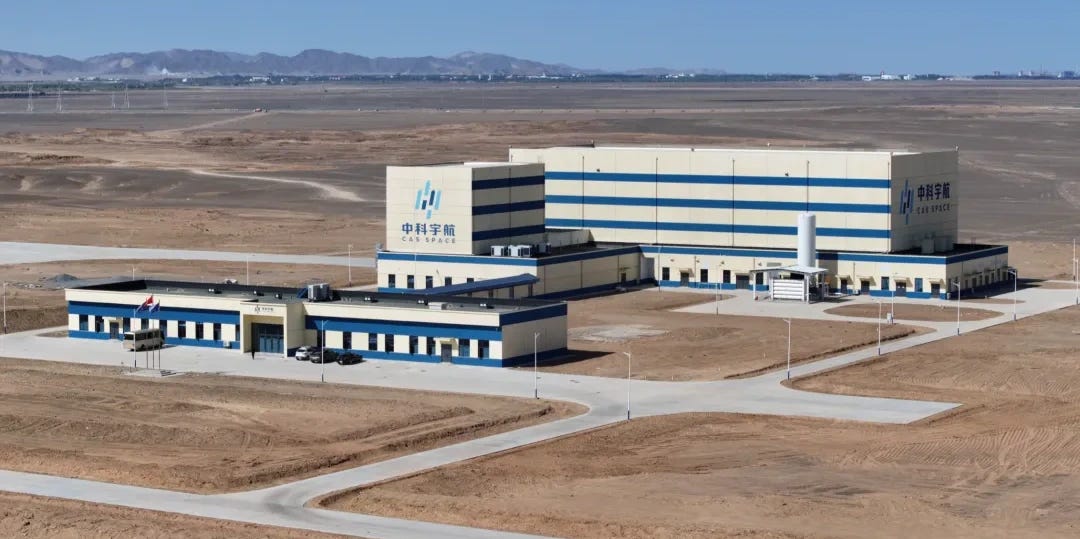


Would you happen to have the coordinates for Deep Blue's test facility. I've been trying to find the location for like an hour now, but so far no luck. Or maybe which direction it is in relative to JSLC?